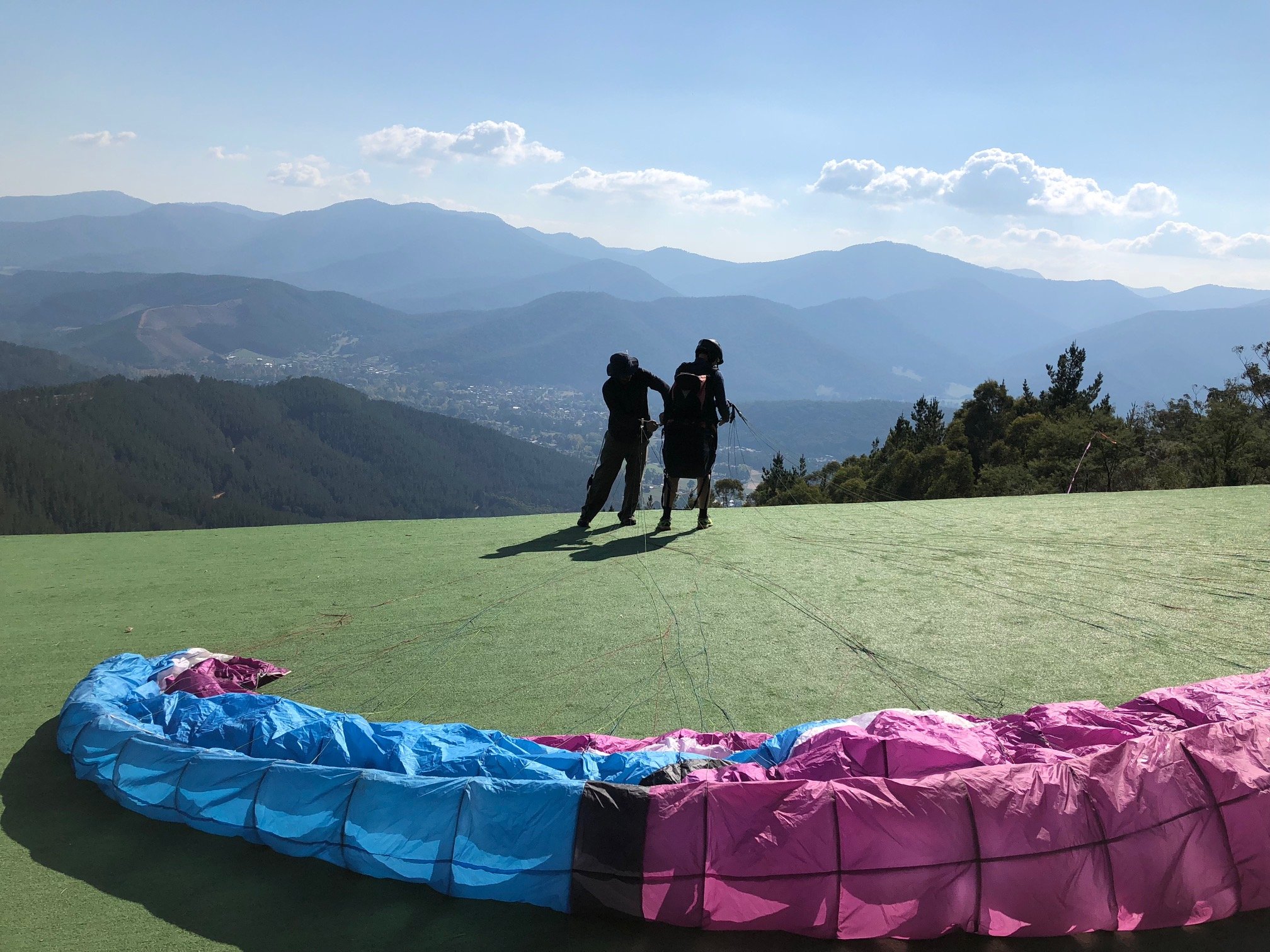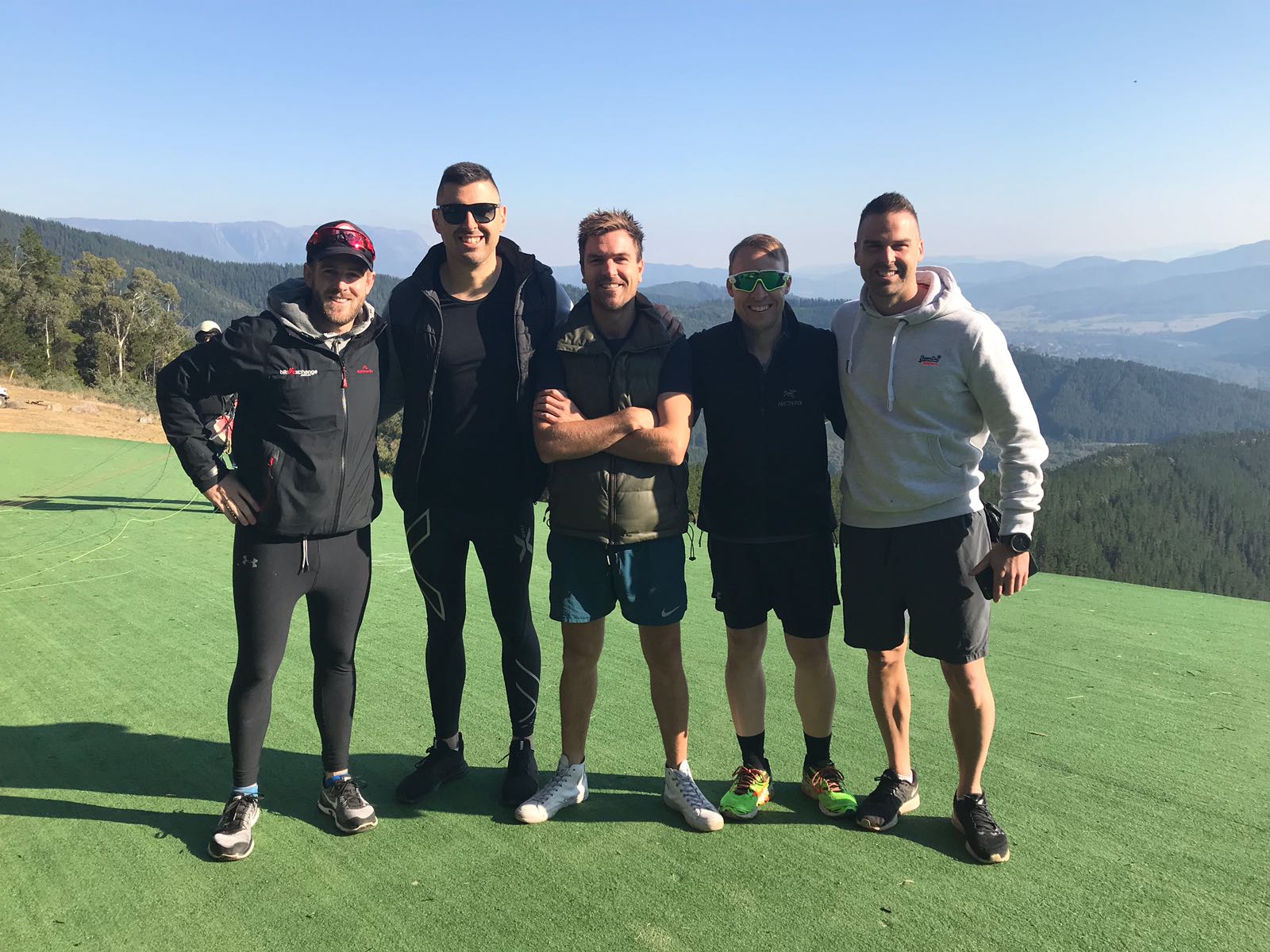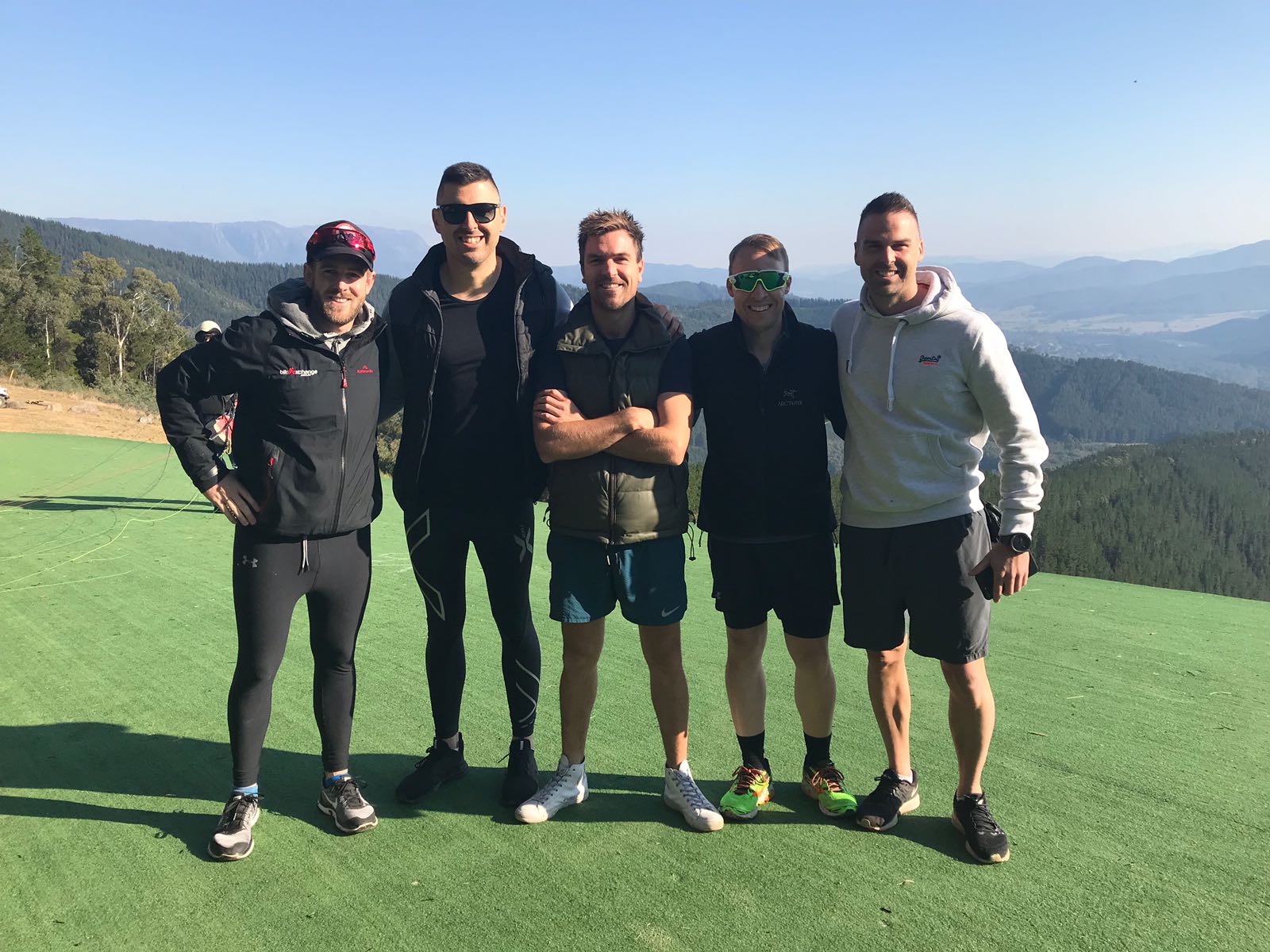I spent last weekend with four of my best mates and together we embarked on a mission.
The mission was to go from absolutely no experience on a paraglider, to completing a 6 minute solo flight from Mystic Peak in Bright, to the base camp next to the main road.
After a near-fatal flight in a tandem glider, here are the 5 lessons that I can share from my experience.

1. CONSISTENCY OF MESSAGE (Subconscious Conditioning)
A bit of background..
The human mind consists of two systems (please click link to learn more). System 1 is our subconscious mind. It is responsible for making 99.9% of decisions. System 2 is our conscious mind. The thoughts that we are aware of occur in System 2.
When we learn something for the first time, it requires our System 2 to engage. Once our System 2 has repeated a task enough times, it can become subconscious (System 1). Think about driving a car: the first time we do this, it’s overwhelming. Give it a few months and we’re completely unaware of our feet on the pedals, indicating or changing gears as we drive.
On my recent paragliding adventure, rules were created during training. Some of these rules included, ‘don’t pull your hands down to brake below the carabiner clip, as this means that you are braking too hard.' The other piece of information that we were trained on was the location of the landing pad and how we should approach it. There were two landing pads and we were given clear instructions: we were going to be using landing pad 2.
After our training in a paddock, it was time to go on our tandem jump. I had a new instructor that wasn’t there during training, however he had years of experience. After a 2 minute introduction, we were about to jump off a mountain together.
We had a very successful launch and soon we were flying. Along our flight path, he repeatedly told me to ‘pull further’ on the brake as we turned. This was in conflict to my training and previous conditioning. Little did I know that in a tandem glider, you need to exert more force than in a solo glider which was why more force was needed. I only learnt this after our near-fatal flight.
My System 2 overload occurred when we veered off from our direction and flight path.
We had been told to use landing pad 2, which was a sweeping left-hand turn over the road. Throughout the entire flight, I was scanning for a left-hand landing pad. I couldn’t see it or anything that resembled this landing strip. I was listening to his instructions, but they were in conflict with where I thought we should be heading. This uncertainty was taking up my entire System 2 (conscious mind). No other communication was making it through until I had clarity on the direction that we were going to land.
As we got closer to landing, my instructor started saying, ‘Brakes up’. I was still trying to figure out where and how I was going to land this thing because at this stage I had complete control over the craft.
All I kept hearing was ‘Brake!’ from the instructor behind me. So I pulled the brakes harder.
My instructor now yelled louder and with more emotion, ‘BRAKES UP!' I didn’t know why he was getting angry, so my System 1 (recently conditioned subconscious) did what it through was right.
So I yanked on the brakes even harder. This was greeted by an aggressive and urgent, ‘WHAT THE F*#K ARE YOU DOING, BRAKES UP!!!!!!’ Now, my conscious brain is completely scrambled after training all day. As a result, I’ve instinctively ripped the brakes again - well below the safety carabiner. This severe and constant braking meant that we were about to completely stall the glider and face a rearwards free fall out of the sky.
A complete stall at this height results in either death or severe injury.
The lesson that I learned here is that to avoid System 2 overload, it is important to keep a consistent message. Mixed messages result in System 2 confusion, which means that it reverts back to a subconscious thought process. With a lack of experience, a subconscious thought process is incredibly dangerous.
2. STRESS CONDITIONING
Going from absolutely no experience with a paraglider, to completing a solo flight with a 500 metre descent means building up levels of stress. We started training in a paddock filled with cows, running down a hill and learning how to launch the glider into flight. This taught us how to get the glider off the ground and into the air from a standing start.
There is a specific technique that needs to be used. If this technique was out and your body weight was not forward, this would result in a failed flight and possible injury. Getting used to launching and taking 5 to 15 second flights, it was vital to understand how to achieve this, but more importantly, to condition ourselves to what this experience should feel like with limited risk.
Following this practice, the next level of stress we were exposed to was another tandem flight, where we took the controls. We had an experienced pilot behind us, to take over if we got in trouble (absolutely necessary in my case!) My first tandem flight was extreme System 2 overload, where my subconscious took over. This was not a pleasant experience as my entire being was telling me, ‘Don’t put yourself in this situation again. Don’t jump!’ I was only seconds away from my rational brain instructing me to pull the pin and never do this again as that was an incredibly unpleasant experience.
This was quickly followed by my instructor saying, ‘We need to jump again NOW!’ I knew that this was an opportunity to face my fears, so I consciously decided to override my rational brain and made the decision that I was going to jump again. This time, as we hopped in the back of the troop carrier and headed up the hill, I felt more nauseous and anxious than my first flight.
When we got to the flight deck, I felt a sense of calm as I had just been through this experience and knew what the feeling of take-off was like. I knew the exact flight path. I knew the experience of flying. I was in control and I not only dominated the flight, I absolutely loved it!
I also learnt a very valuable lesson from the previous, unpleasant experience, which I am now incredibly grateful for. If I hadn’t had that experience, I wouldn’t know that the safest place to have your hands is straight up in the air. The glider can fly itself.
3. LEADERSHIP
Leadership is not a title, it’s a behaviour. I was reminded of the critical importance of leadership through this experience. Leadership, in my opinion, is about creating a vision and communicating a clear plan for the team to follow in order to achieve that vision.
During my first flight, I had a plan that I thought we were working towards and nobody communicated the change of plan to me. As a result, I was completely confused. I have to own this, as it was my responsibility to check in with my instructor, to see if the plans had changed. If you are uncertain, you must speak up. Leadership goes both ways - everyone must own the outcome.
4. EMOTION
When emotions run high, IQ runs low. This was evident during our flight. When my instructor got emotional and angry, my IQ plummeted. I was interpreting his anger, more than his words.
In situations of high stress, it is even more critical that we keep a cool head. If we are giving instructions to our teams from an emotional state, then the chances are that they will be interpreting our anger/frustration/disappointment. Don’t let emotion interfere with your objective.
As soon as emotion and increased tension creeps in, it short-circuits the human brain. Rushed, anxious emotions from leadership flow to the team. If the most experienced team members are highly emotional then the team IQ will suffer.
5. EXPERIENCE
I was going to quit after my first tandem flight. I didn’t want to have that experience again. However, I knew that I didn’t want to run from a fear - I needed to face it. The second time flying in tandem, I knew what to expect. I was present and could leverage my recent knowledge and experience. I knew the direction, the flight path, the surroundings and what to look for.
I learned to always have a trusted, experienced instructor close to me. Without experience yourself, it’s easy to get into a stall and to free fall from the sky. Having a trusted advisor, coach or mentor to guide you through the learning stages is necessary to ensure that you don’t make catastrophic errors. As my instructor said, ‘You don’t know what you don’t know’.

SUMMARY
After a valuable learning experience, I saddled up and took another flight. On the final morning, it was time for the solo flight. With the experience that I had gained, the stress conditioning and a bout of breathing and meditation I completed a solo flight and absolutely loved the experience.
Facing my fears, regulating emotion and stress conditioning can all be challenging times. However, in my experience, if you have the right attitude and commit, the reward is just on the other side.
I'm so incredibly grateful for this human experience and what we experience in our lifetime. We have truly won the lottery, the lottery of life. There is no good or bad, just experiences. I am still buzzing from the weekend's paragliding experience and I wouldn't have changed it for anything - it was absolutely perfect.
Editor’s note: An increase in key man insurance is on the agenda for the next management meeting.




